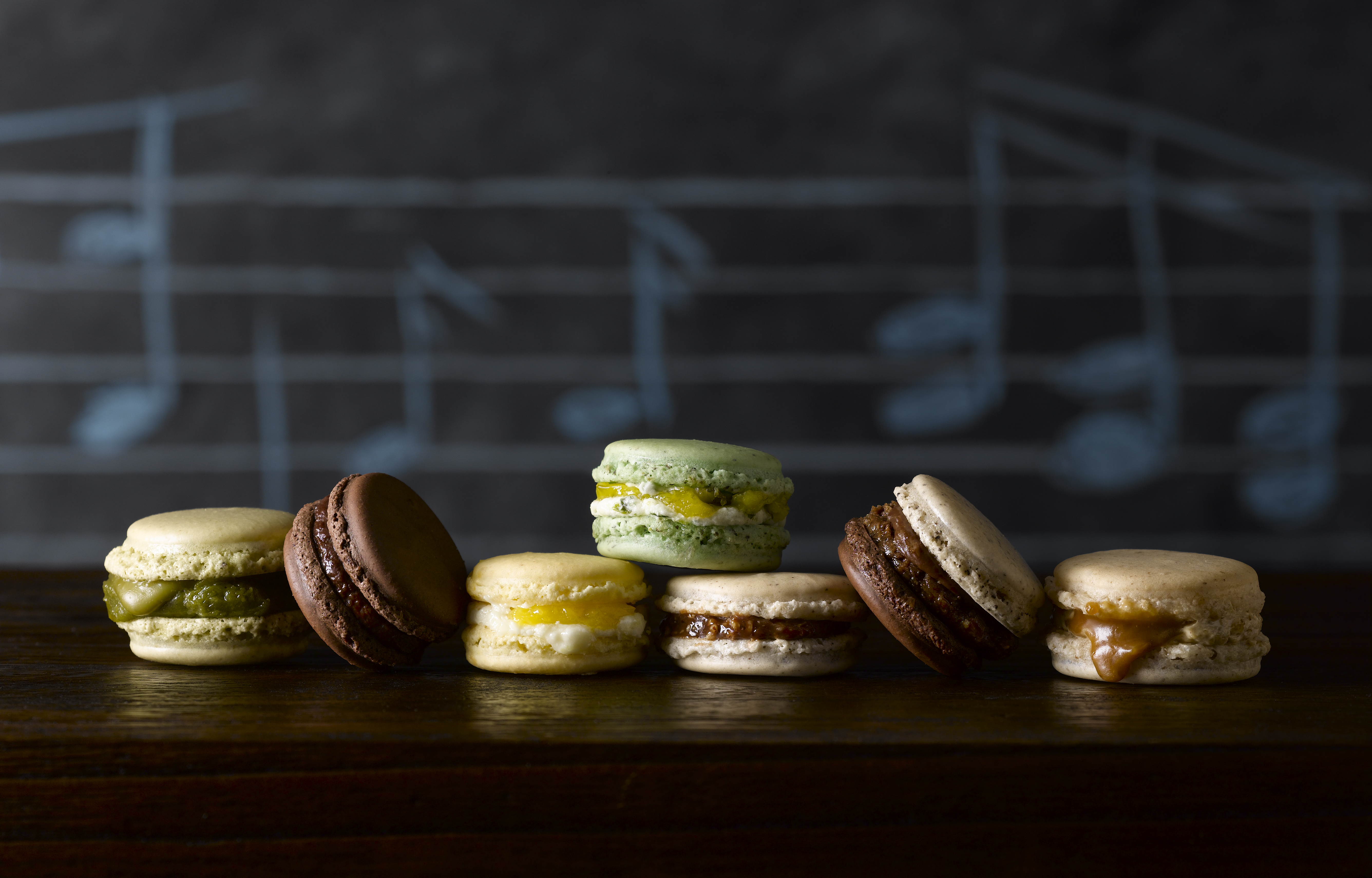
Macaron Flavor Philosophy: How to Create a Macaron Flavor

The process behind creating macaron flavors is an elaborate and exhilarating one. Flavors are more than just taste and texture (although we’ll get into those later, I promise)–they’re an experience. They can be like little conceptual time machines—taking you back to a moment that reminds you of bliss, or innocence, or when all of life’s tribulations didn’t seem to exist (I’d definitely have at least five of whatever flavor that is…). That moment of emotion and nostalgia is a moment I try to chase whenever I’m thinking about the next flavor of macaron to make. I know it sounds a bit lofty and abstract, but it’s true—a decadent chocolate cake always sounds good on a bad day. We habitually come back to childhood favorites even when we grow older, despite knowing there is “better” food out there (case in point: we still love halloween candies. I know that five pound box of candy isn’t all for the children, Karen).
And the flavors I make at Poeme are entirely devoted to creating these moments of bliss… or excitement…or tranquility—it’s a real box of emotions up in here you guys (I guess money can buy happiness?). These experiences are often tied to travel and cosmopolitan adventures for me; I love to visit new places and try the local delicacies. Those novel flavor profiles then inspire me to create a little passport in my macaron; tasting one can take you on an all-expense paid trip to a special place in the world (okay, not really, but work with me here—it’s at least like a vacation picture that you can eat, and that’s amazing). For instance, my travels to Japan are highlighted in the sesame soy-sauce macarons (I promise they’re delicious and not scary!) and matcha macarons, among others. Take a look at these pictures of Nagoya Castle while eating my Japanese-inspired macarons and travel there virtually:



I also have familial ties to international adventure; my parents immigrated to America from Serbia in their thirties and this multicultural background has shaped not only the food I eat, but also my experiences. So really, it’s ingrained in me to be inspired by travel and culture. The power of flavor and taste is remarkable, taking you from your humble couch to an exotic country in just the seconds it requires to open your mouth. Pretty sweet deal, huh? (sorry, unintentional pun!)

Now that all of the philosophical-deep meaning stuff is behind us, I can get into the more technical aspects of flavor creation. A critical component to creating my macarons lies in texture. Without getting into too much detail, a macaron is an extremely delicate pastry–the shells can only take a certain amount of moisture. This means that some delectable dessert favorites that are high in moisture (like whipped cream) can’t normally be used because the macaron will become soggy. But there are ways to circumvent this issue (secrets which I won’t disclose here, or else I might lose my spot in the ultra-secret macaron council), which allows me to fill macarons with pastry cream, sauces, and compotes that create a more intense flavor than just buttercream would, as well as a decadent melt-in-your-mouth textural experience. This isn’t typical in other macarons–they usually just use buttercream and sometimes very thick, gel-like jam.

Thus, when coming up with a flavor, I always think about the different forms of this flavor I can create in one macaron. Take my Lemon macaron, for instance. There’s lemon zest in the shell, a bright, zesty punch of lemon curd in the center, and a sweet and tangy lemon buttercream on the outside. This mixture of intense, tart, and thick lemon curd with the chewy, slightly crispy lemon shell, and silky sweet buttercream creates an incredibly rich Lemon encounter, balancing a plethora of flavors and textures. There’s no limit to flavor when armed with the power of taste and texture (flavor sounds like an old-timey superhero, now that I think about it…).

Additionally, because a macaron has a meringue-based shell (where the primary ingredients are sugar and egg whites), mitigating the overall sweetness is crucial. So using a more intense filling (that also requires more moisture) is both a necessity and a problem–you want strong flavor and silky texture, but you also need to have a stable, not-soggy macaron. This conundrum makes flavor development an exciting and fulfilling challenge–it’s an exercise in creative problem solving!
So creating a macaron flavor is certainly complex, but it’s also rewarding. The creative bounds are endless, and the end result has power to create a complete experience–memories, tastes, and textures all go into creating a “Poeme” bite, full of flavor and love.

For more about flavor inspiration, read here.
Related

Inspirational Bites
You May Also Like

Flavor Profile: Zerbo Macarons
February 13, 2019
Flavor Profile: Lime-Basil Macarons
February 15, 2019
